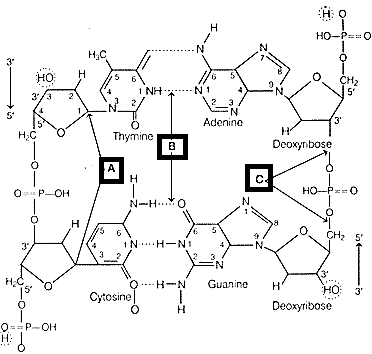Experiments in Search of Genetic material
Experiments in Search of Genetic material: Overview
This Topic covers sub-topics such as DNA, Griffith Experiment, Hershey and Chase Experiment, Avery Experiment, Chemical Composition of DNA, Properties of Genetic Material and, Evidence of DNA as Genetic Material
Important Questions on Experiments in Search of Genetic material
The series of experiments done by F. Griffith involved which of the following bacterium:
MacLeod, McCarty and Avery determined that R strain bacteria transforming into S strain bacteria because of:
Experiments of Griffith on mice explained the phenomenon of:
Unequivocal proof that DNA is the genetic material was first proposed by
In Hershey and Chase experiment radioactivity is detected in supernatant when:
Motivated by the classic experiment of Fredrick Griffith and the work of Avery, MacLeod and McCarty to identify the transforming principle, a scientist redesigned and perfromed the experiment with S-strain and R-strain of Streptococcus pneumonae as summarised in the table below:
| Treatment | Experimental Conditions |
| T1 | S-strain (heat killed) injected into mice |
| T2 | S-strain (heat killed) + R-strain (live) together injected into mice |
| T3 | Nucleic acid isolated from S-strain (heat killed) + R-strain (live) incubated with RNAse and injected into mice |
| T4 | Nucleic acid isolated from S-strain (heat killed) + R-strain (live) incubated with DNAse and injected into mice |
| T5 | S-strain (live) injected into mice |
| T6 | R-strain (live) injected into mice |
From the options given below, identify the outcome of the treatments (T1 to T6) on the viability of the mice.
What is the difference between and DNase?
Oswald Avery, Colin MacLeod and Mc Carty worked to determine the _____ nature of 'transforming principle' in Griffith's experiment?
Friedrich Meischer
Griffith, in his transforming experiments on mice, has taken 2 strains of Streptococcus pneumoniae: R-strain and S-strain. In which of the following cases do mice will remain alive?
A student isolated a new virus which is able to infect E. coli. The following experiment has to follow to confirm the hereditary material of new virus.
Match the following:
| List - I | List - II | List-III | |||
| (A) | Discovery of genetic material | () | Transforming principle | () | Conjugation |
| (B) | Chromatium | () | Derive energy from the oxidation of an inorganic substance | () | Obtain carbon from the atmosphere |
| (C) | Conservative process | () | Capture light energy | () | S. pneumoniae |
| (D) | Beggiotoa | () | Donor retains a copy of genetic material | () | Obtain carbon from |
The correct answer is :
Arrange the following aspect of a double stranded molecule with the sequence in ascending order
A) Number of phosphodiester bond
B) Number of bonds
C) Number of total pyramidines
Match the following lists:
| List - I | List - II | ||
| Erwin Chargaff | Transforming principle | ||
| Frederick Griffith | Nuclein | ||
| Alfred Hershey | Ratio between and and that between and are constant, each equals one | ||
| Colin MacLeod | Biochemical nature of transforming principle | ||
| as the genetic material that is passed from virus to bacteria | |||
The correct match is
Which of the following experiments with bacteriophages proved that DNA is a genetic material?
In the given diagram of chemical structure of DNA, identify the type of bonding shown by and .

Match column I with column II and select the CORRECT option.
| Column I | Column II | ||
| Meselson and Stahl | Transduction | ||
| Jacob and Monod | X-ray diffraction data of DNA | ||
| Hershey and Chase | Semi-conservative DNA replication | ||
| Wilkins and Franklin | One gene one enzyme hypothesis | ||
| Beadle and Tatum | Operon system |
Which of the following statements are false regarding 'Hershey and Chase' experiment, proving DNA is genetic material?
(i) They made use of rats.
(ii) Radioactivity was seen in supernatant for the medium that was infected by phage radiolabeled with 32P.
(iii) Used radioisotope to label sulphur with 35S in sulphur-containing amino acids.
(iv) Radioactive phages were allowed to attach to E. coli bacteria.
The haploid content of human DNA is ________.
Which of the following isotopes were used in the Hershey-Chase experiments?
